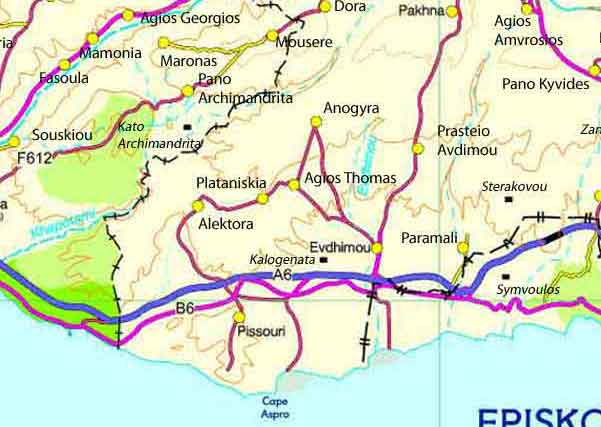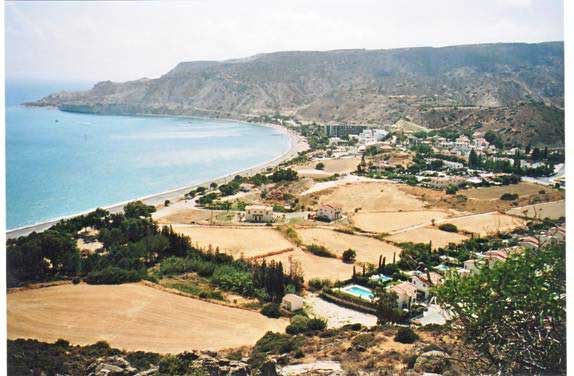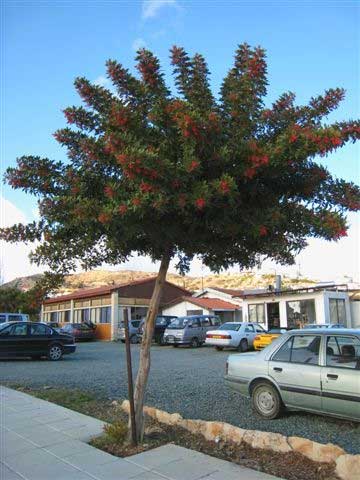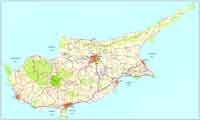.

Pissouri (Greek : Πισσούρι ), is a seaside village located in Limassol’s district, Cyprus (thirty kilometres westwards of Limassol’s centre), between Limassol and Pafos. Pissouri’s administrative area forms the third biggest in Limassol’s district. The main settlement of Pissouri is situated about three kilometres away from the bay named Cape Aspro, and is built on the side of a green hill. The settlement, strangely, is placed in the middle of Pissouri’s territory.
Now they are two distinct communities, Pissouri village and Pissouri Beach. The total population in the summer is said to reach around 1100 people, about half of whom are Cypriots, the rest foreign, mainly British, residents and visitors.
Some of the guide books about Cyprus devote a sentence to Pissouri, some even devote a paragraph to the village and its small beach resort. None of them do justice to the unique character and attractiveness of Pissouri to the visitor and holiday maker. the Cypriot character has been retained, it is still very much a working village of farmers, some of whom have now become involved in farming tourists with varying degrees of success. Its very Cypriot character is what attracts the visitor, holiday maker and expatriate residents. Fortunately this is recognised by many of those in the village. From time to time fears are expressed that too rapid development will see another Agia Napa spring up from the vineyards of Pissouri and be built here - but this will not happen - at least for many decades. The character of the beach resort and the village is assured.
Visitors can find almost anything they want in Pissouri - there are several shops and just every need is available. As far as tavernas, restaurants and bars are concerned, there is an amazing number and variety - and they are all good, serving food and drink of exceptional quality. There are also two banks in Pissouri village square.

Pissouri, Photo : Augusta Stylianou
Names
According to some official resources, the name of Pissouri derives from the ancient city ‘Voousoura’, as reported by the ancient historian and geographer Stravonas. Some other resources connect the name of the village with pitched-dark nights. (According to the Cypriot linguistic idiom, ‘pissouri’ is considered as ‘very dark’).
A legendary reports that the 300 ‘Alamanoi’ Saints who came in Cyprus from Palestine in order to practice in various parts of the island, arrived at Pissouri’s coast such a pitch-dark night. Another legendry reports that ‘the Saint Fathers’ pursued during the post-Christian era, were met in Pissouri’s region during a really black-night. However, it seems that the name of the village does not eventually stem from those legendaries but from the fact that in the region there was an extensive extraction of skin-sap from pine trees (called ‘pissa’ in Greek). The skin-sap production begun during the Byzantine Empire (Eastern Roman Empire), continued during the Middle-Ages (5th – 15th century) and the Frankish era in Cyprus.

Pissouri, Photo : Augusta Stylianou
Development and occupation
Pissouri has an annual rainfall in the order of 447 millimetres. Local products nowadays are tabled grapes, wine, potatoes and other citrus fruits in smaller quantities planted across the valley spanning from the gulf to the hill, where the settlement is. There are also many olive, carob and almond trees. Unfortunately, during the last years, farmers had to eradicate big part of their vineyards, as they became profitless.
Churches
In the Pissouri community the visitor would show great interest to come across with some elements from history as much as for the historical and big church of Apostle Andrea, as for the small old churches of the community.
Visiting the church and chapels, in an excursion style, he would feel proud, satisfied and excited about the fact that he had met closely , the size of beauty, the charm and the religious devotion of those who lived and created these holy monuments of Christianity, of Glory and culture in this beautiful and hospitable community .
The Church of Apostle Andrea was built with voluntary work by the good-willing residents of the community in 1883. The work for the construction of the church lasted for about twelve years. The Stone that the church is built originates from the regions of villages Anogyra and Prasteio villages and was transferred in the village with carts which were dragged by Cypriot donkeys. The church is built in Gothic style. The place that it is built was used as the village cemetery up to 1912.
The church is famous for its wooden-carved Icon Stand, which is a real work of art and was manufactured in 1890.The manufacture lasted 10 entire years because of the means of that time.
Other chapels are: Saint George, Prophet Elias, Saint Alexandros, Saint Mauritius.
Community Council President: Christakis Aristidou
Images Cyprus, Limassol District

| Ancient Greece
Science, Technology , Medicine , Warfare, , Biographies , Life , Cities/Places/Maps , Arts , Literature , Philosophy ,Olympics, Mythology , History , Images Medieval Greece / Byzantine Empire Science, Technology, Arts, , Warfare , Literature, Biographies, Icons, History Modern Greece Cities, Islands, Regions, Fauna/Flora ,Biographies , History , Warfare, Science/Technology, Literature, Music , Arts , Film/Actors , Sport , Fashion --- |
Retrieved from "http://en.wikipedia.org/"
All text is available under the terms of the GNU Free Documentation License

